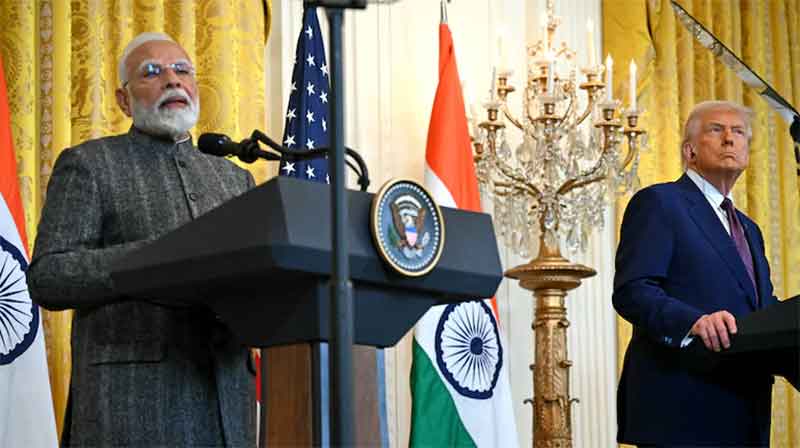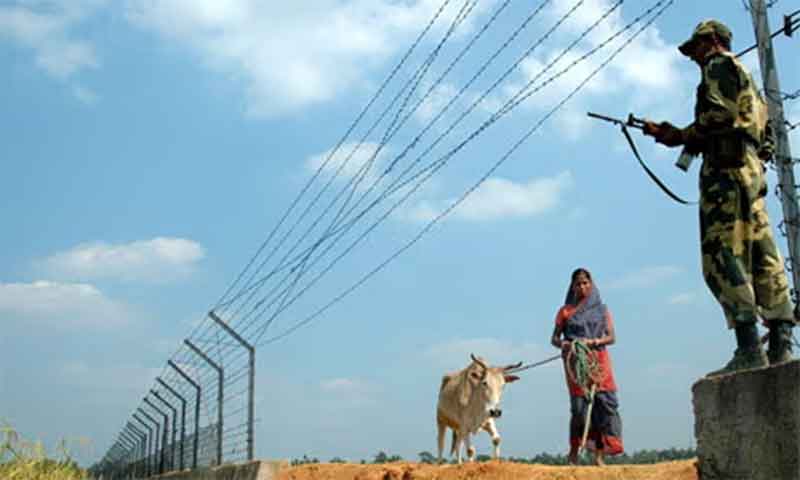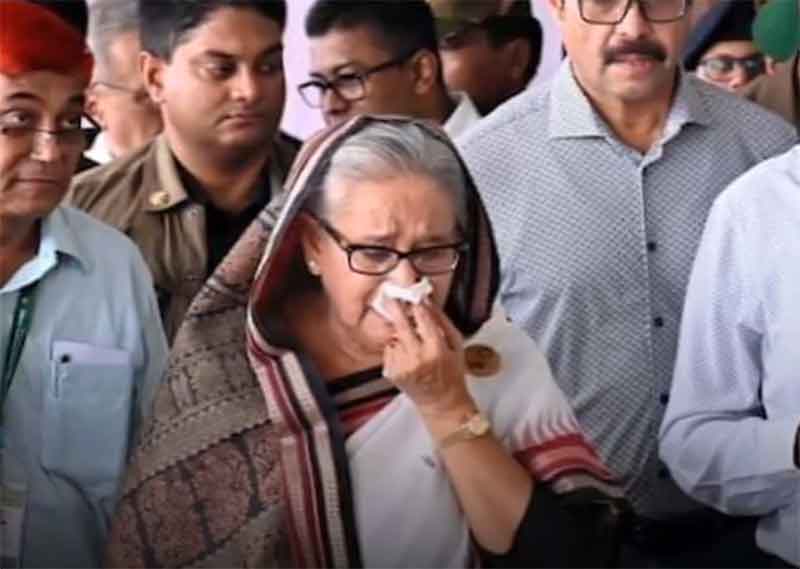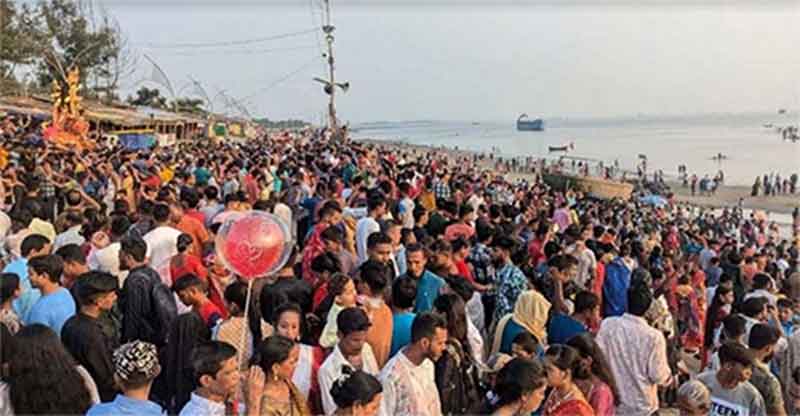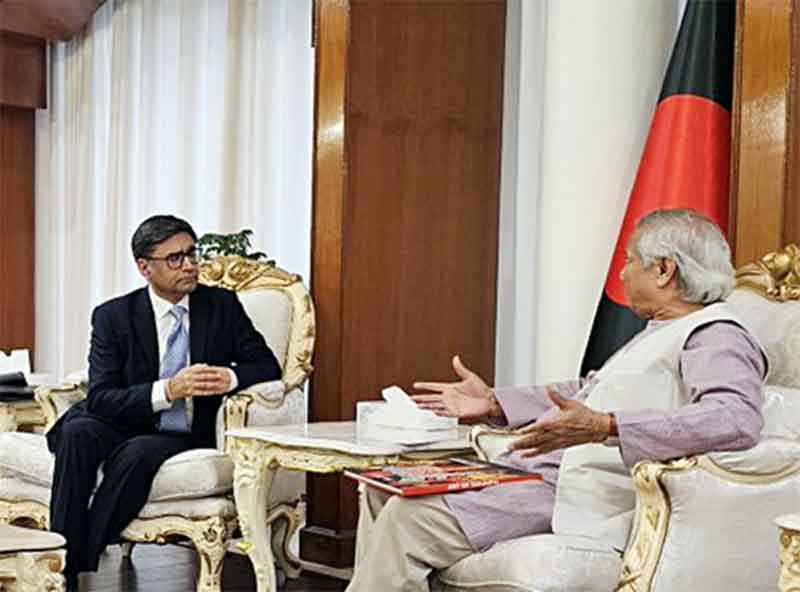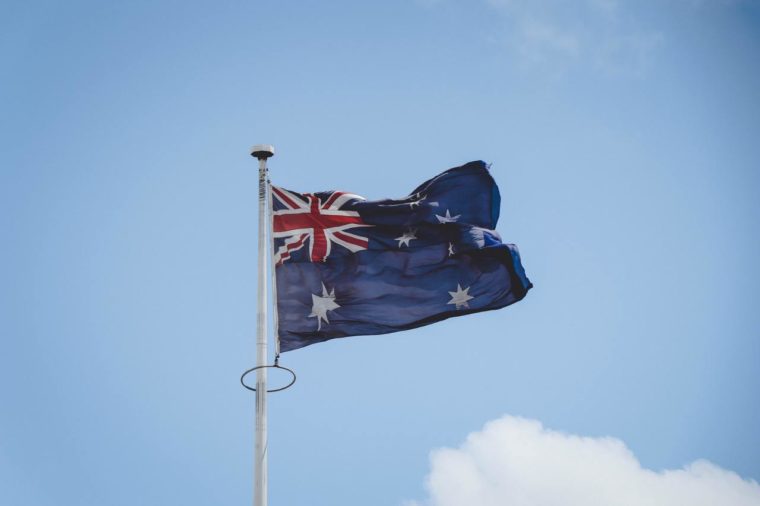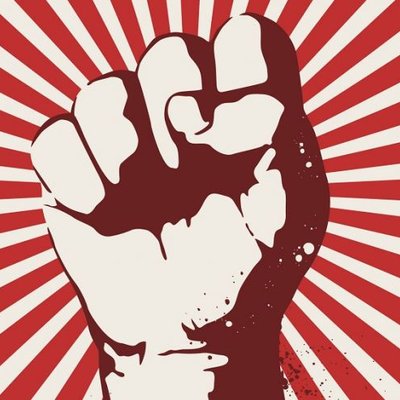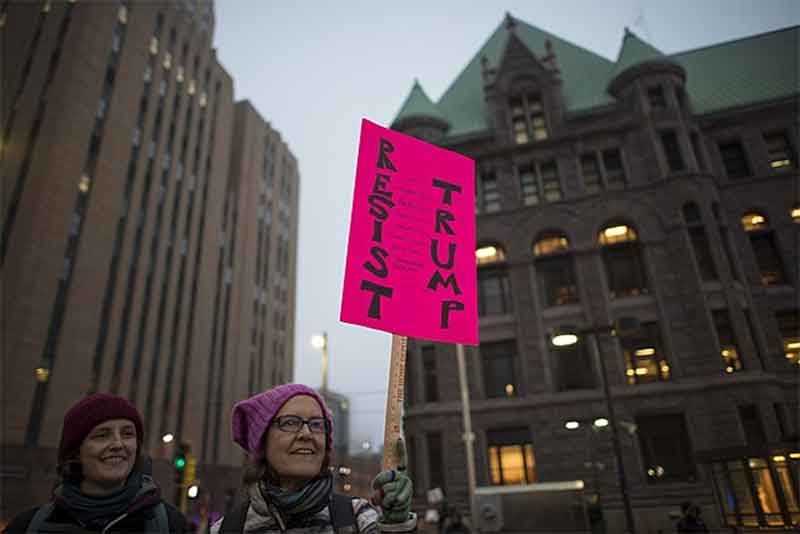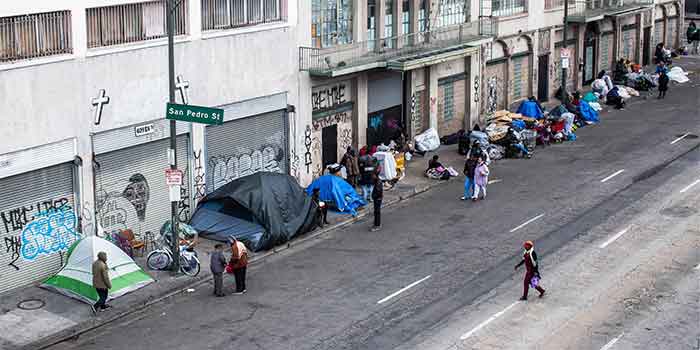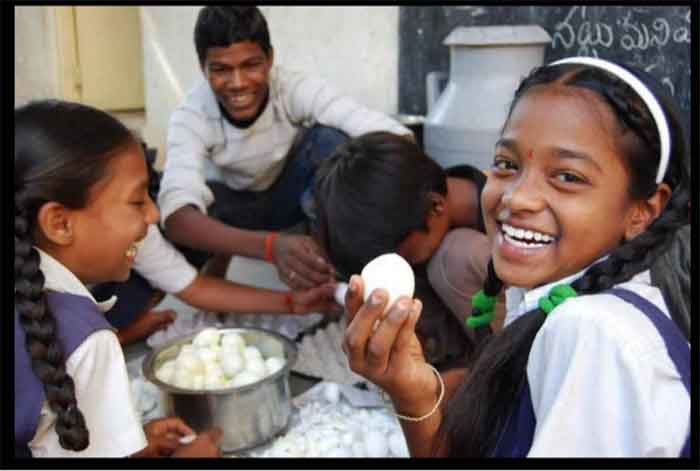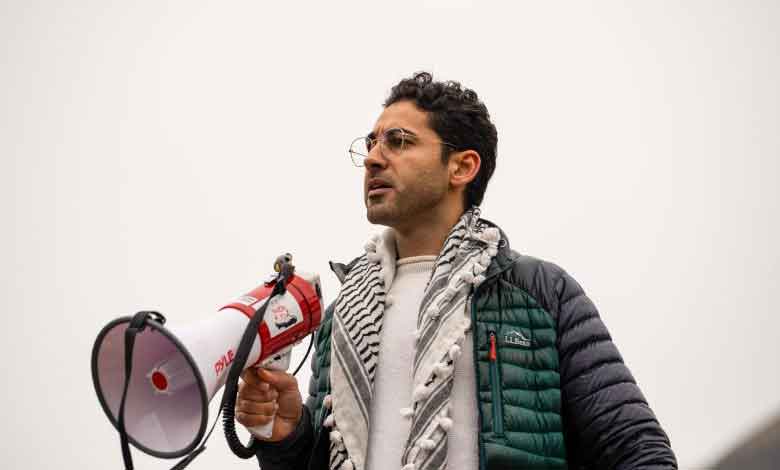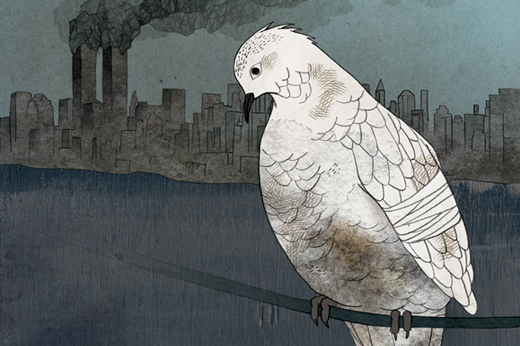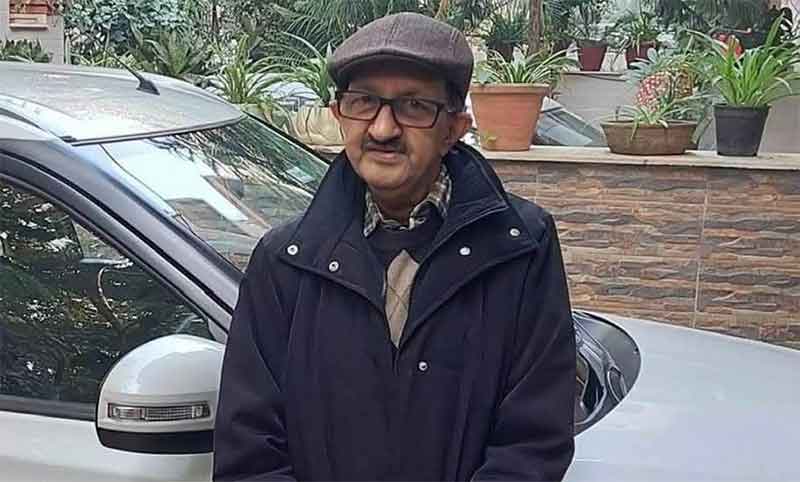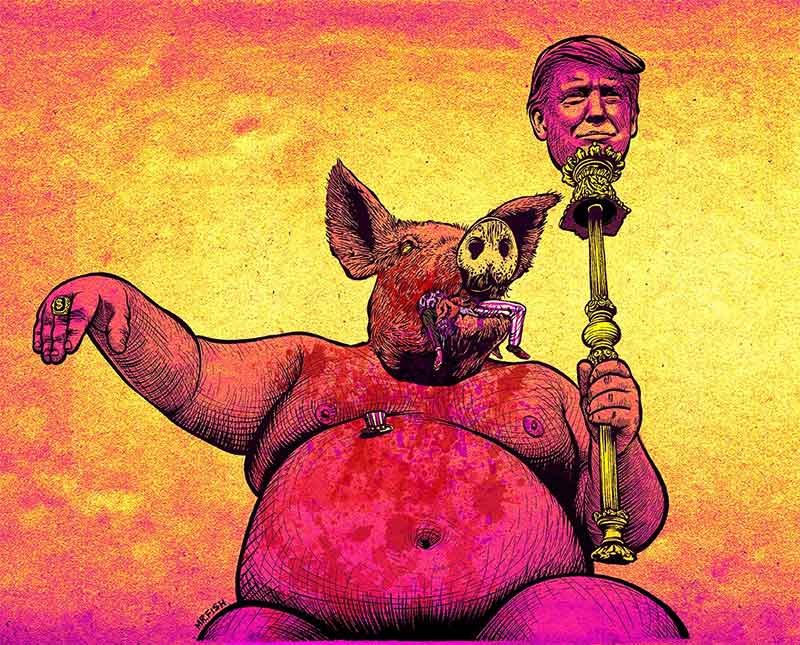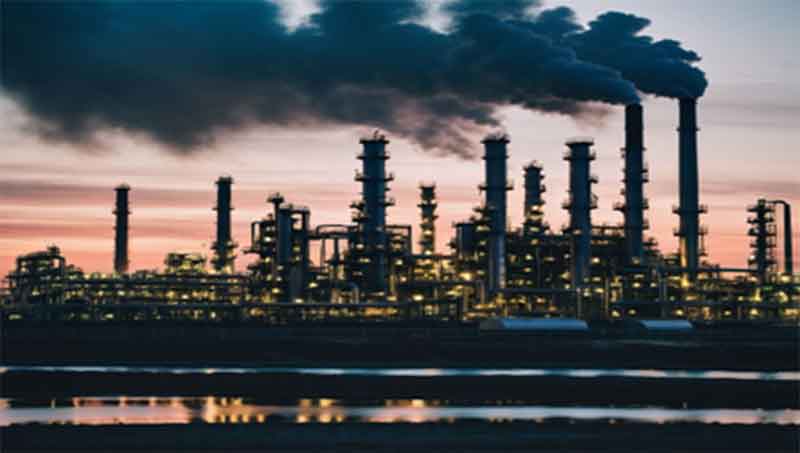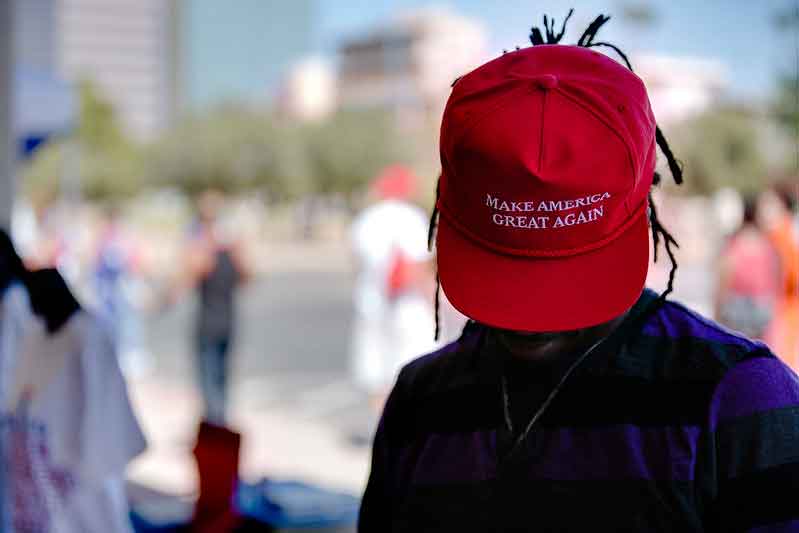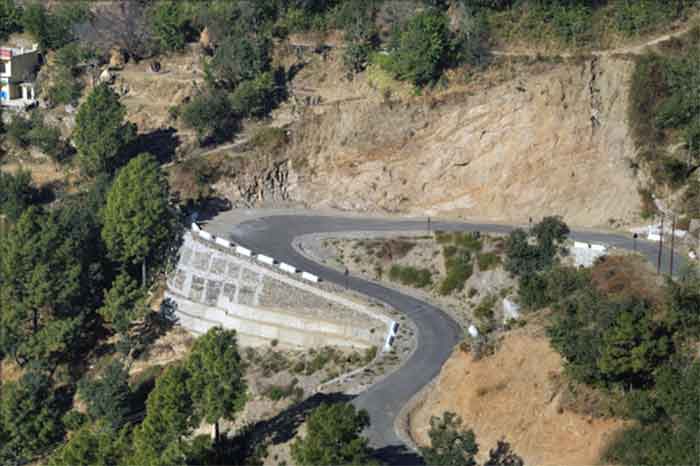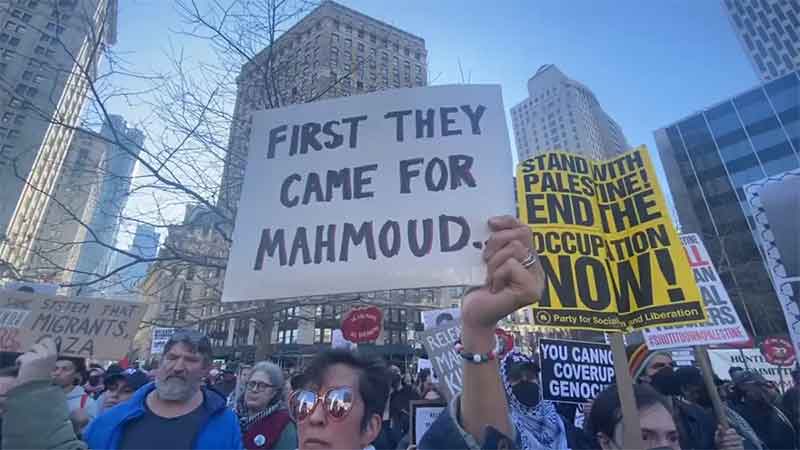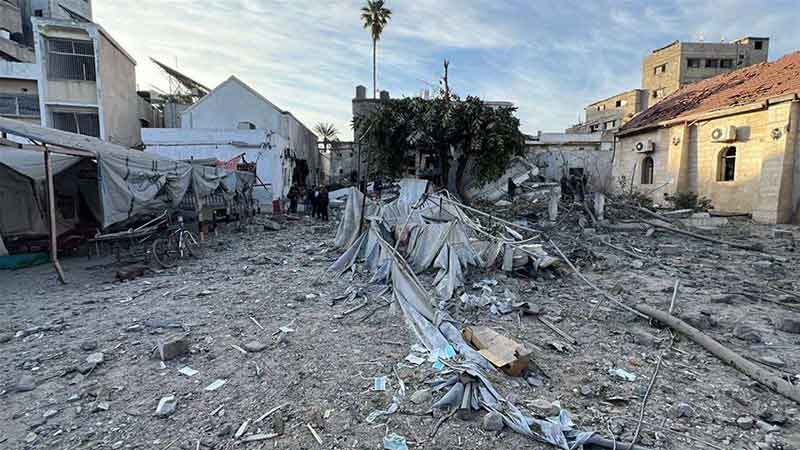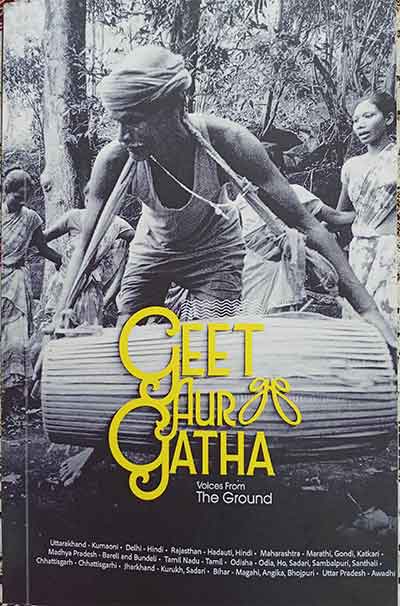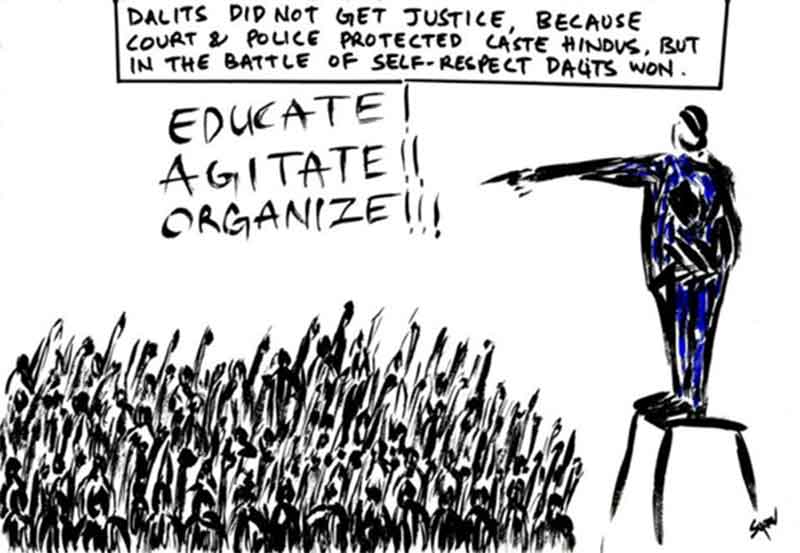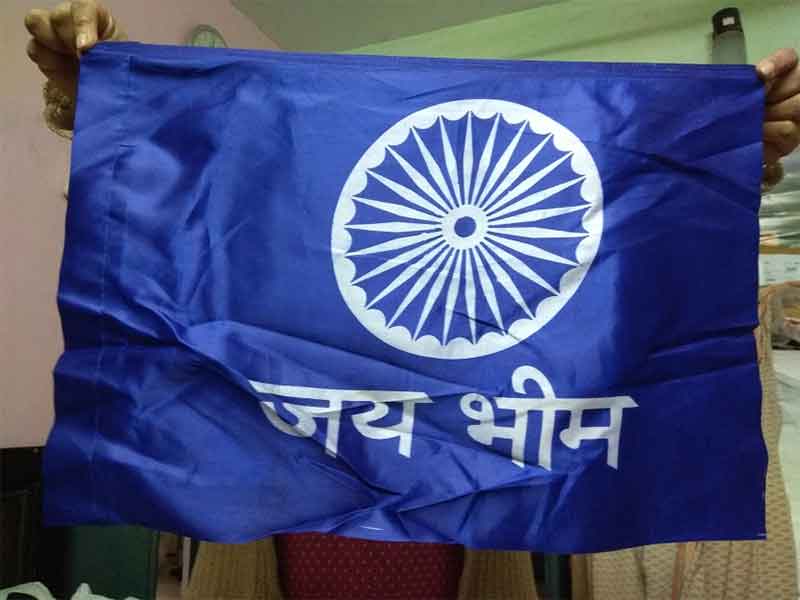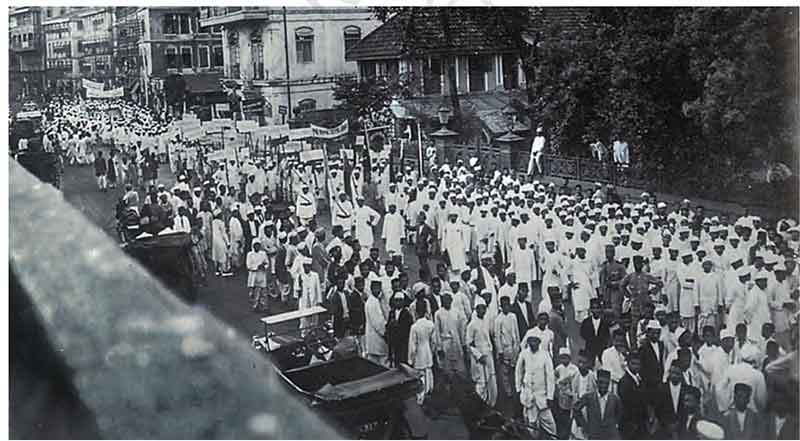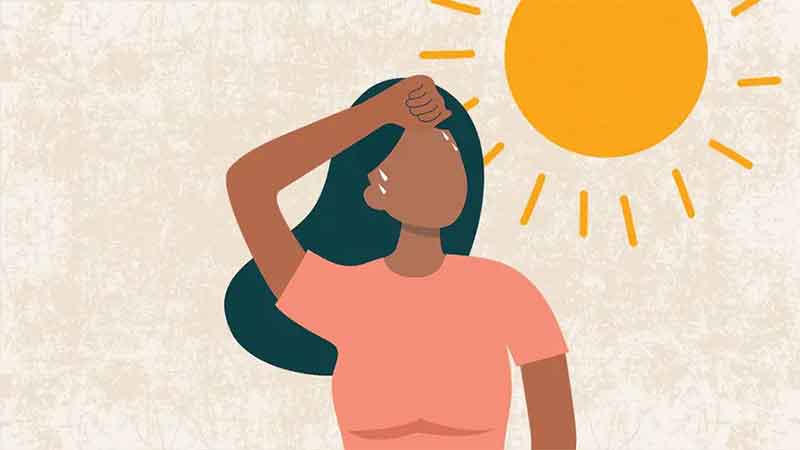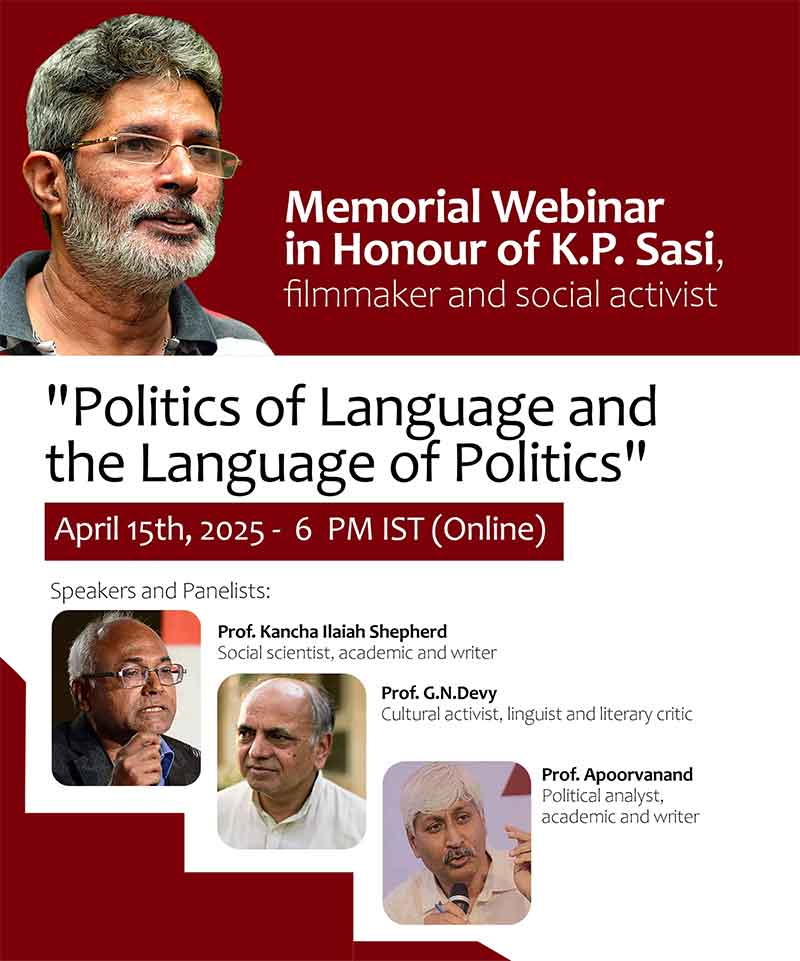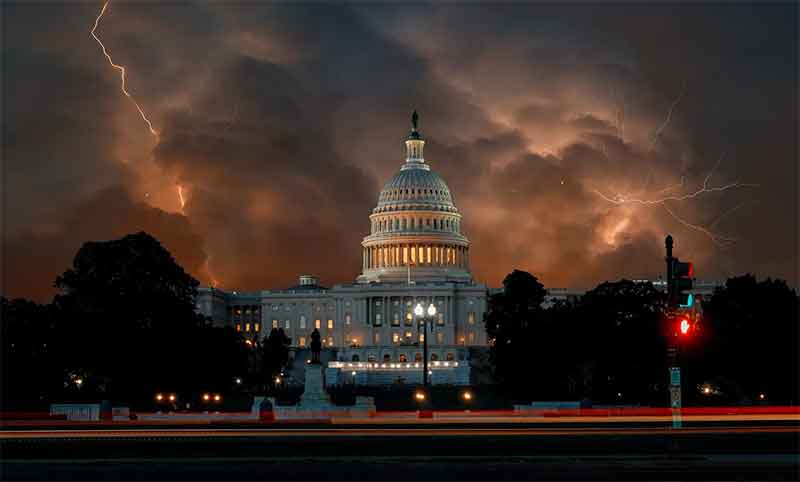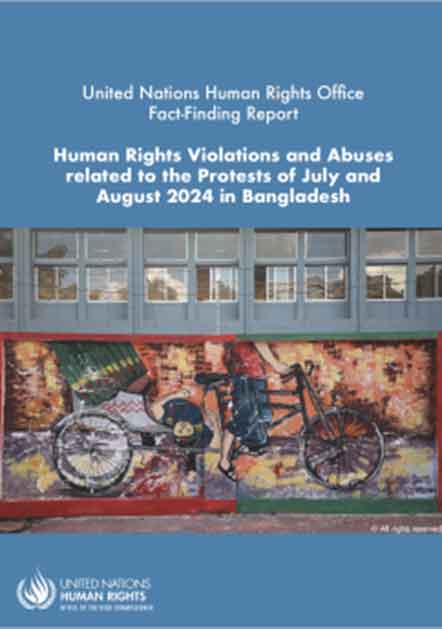
Former Bangladesh Prime Minister Sheikh Hasina’s government was behind possible “crimes against humanity” as it strived to hold on to power last year, says the United Nations Human Rights office in a fact-finding report on Feb 12 Wednesday.
It estimated that “as many as 1,400 people may have been killed” in those 45 days while more than 20,000 others were injured, including women and children. The overall death toll projection in the UN report is far higher than the most recent estimate by Bangladesh’s interim government of 834.
The Indian media, engaged in disinformation, underplayed, almost buried, the official Report. Hence this report for countercurrents. org.
The vast majority of those killed “were shot by Bangladesh’s security forces”, the Rights Office said, adding 12 to 13 percent of those killed were minors. Bangladesh Police reported that 44 of its officers were killed.
As many as 66 percent of all the deaths were caused by military-grade rifles, while a further 12 percent were caused by shotguns loaded with metal pellets, found the fact finding mission.
The 114-page report is primarily based on more than 230 confidential in-depth interviews conducted in Bangladesh, including online, with victims, witnesses, protest leaders, rights defenders and others, as well as reviews of medical case files, photos, videos and other documents.
Countering the well-documented Report, an unrepentant Sheik Hasina made assertions few outside her coterie would believe:
Sheikh Hasina, “speaking at a public event, slammed the Muhammad Yunus-led interim government” and she had the audacity to say: “I shall help each and every victim’s family and ensure their killers face the law in Bangaldesh. I shall return. Perhaps that’s why Allah has kept me alive.” She claimed that those killed during the July-August student protests did not die because of police firing. She also said that if post-mortem examinations were conducted now, they would prove her claims. She met with the widows of policemen killed in recent protests and described their deaths as part of a broader effort to destabilise the country. “It is part of the same design that led to the demolition of the Bangabandhu Memorial at Dhanmondi,” she said. (India Today.in, Feb 17,2025). She had earlier addressed online meetings in New York and London, and issued statements calling Yunus a “fascist”, and accused him of perpetrating “genocide.”She has the temerity to say, ” Yunus unleashed terrorists to butcher people.
Given that she resigned and left her country, and she is sheltered in Delhi even as formal arrest warrants and extradition proceedings are facing her, how could she speak in a “public event”? And speak against a Govt Delhi is officially dealing with? It is a gross violation of international law. It’s a case of double-dealing by Delhi, even as Foreign Minister Jayshankar met Yunus govt represntatives and proposed a BIMSTEC summit in April.
As if anticipating such assertions, the UN report said: Forensic pathologists were forced to mis-classify causes of death, erasing proof of extrajudicial killings. There were also frequent internet blackouts to disrupt protesters’ ability to organise. Media was working under severe pressures, and disinformation was the order.
At the press conference in Geneva, Rory Mungoven, chief of the Asia-Pacific Region of OCHCR, said, “Militarisation of policing is a massive problem in Bangladesh…. Politicisation of policing is one of the significant findings.”
There were, in addition, widespread enforced disappearances, of more than 3500 persons, as per an interim report by a Commission appointed by Yunus govt for the purpose (PTI Dec 15,2024).
thedailystar.net, Feb 13, 2025, Editorial said:
“We welcome the long-awaited release of the fact-finding report of the United Nations Human Rights Office about the crimes and abuses committed by the Awami League government during the 2024 July-August uprising. And as expected, it provides conclusive proof of the systematic brutalities inflicted upon protesters as well as Sheikh Hasina’s role in orchestrating them. Other findings of the report are equally chilling.
“This should put to rest any lingering attempts—domestic or international—to distort, downplay, or whitewash the atrocities the regime carried out in a desperate bid to retain power. The facts are now indisputable, so the path to justice should be clearer than ever before.”
For an official infographic and summary issued by the UN Body, visit:
*** ***
The official Summary released by the UN Body is as follows:
At the invitation of the Interim Government of Bangladesh, OHCHR conducted an independent fact-finding inquiry into alleged human rights violations and abuses that occurred between 1 July and 15 August 2024, in the context of the widespread protests roiling the country, and in their immediate aftermath.
Based on a thorough and independent assessment of all the information collected, OHCHR finds that there are reasonable grounds to believe that the former Government and its security and intelligence apparatus, together with violent elements associated with the Awami League, systematically engaged in serious human rights violations, including hundreds of extrajudicial killings, other use of force violations involving serious injuries to thousands of protesters, extensive arbitrary arrest and detention, and torture and other forms of ill-treatment.
OHCHR has reasonable grounds to believe that these violations were carried out with the knowledge, coordination and direction of the political leadership and senior security sector officials, in pursuance of a strategy to suppress the protests and related expressions of dissent.
These serious human rights violations also raise concerns from the perspective of international criminal law, so that additional criminal investigations are warranted to determine the extent to which they may also amount to crimes against humanity and, torture (as a stand-alone international crime), as well as serious crimes under domestic law.
*** ***
The Press Release, by UN Human Rights Office, added:

© UNOHCHR/Anthony Headley UN human rights chief Volker Türk visiting the Nitol Hospital in Bangladesh, where students received treatment after being shot while participating in last summer’s anti-government protests.
Drawing on testimony of senior officials and other evidence, it also found an official policy to attack and violently repress anti-Government protesters and sympathisers, raising concerns as to crimes against humanity requiring urgent further criminal investigation.
The protests were triggered by the High Court’s decision to reinstate a quota system in public service jobs but were rooted in much broader grievances arising from destructive and corrupt politics and governance that had entrenched economic inequalities. To remain in power, the former Government tried systematically to suppress these protests with increasingly violent means, the report finds.
“The brutal response was a calculated and well-coordinated strategy by the former Government to hold onto power in the face of mass opposition,” said UN Human Rights Chief Volker Türk. “There are reasonable grounds to believe hundreds of extrajudicial killings, extensive arbitrary arrests and detentions, and torture, were carried out with the knowledge, coordination and direction of the political leadership and senior security officials as part of a strategy to suppress the protests.”
“The testimonies and evidence we gathered paint a disturbing picture of rampant State violence and targeted killings, that are amongst the most serious violations of human rights, and which may also constitute international crimes. Accountability and justice are essential for national healing and for the future of Bangladesh,” he added.
At the request of the Chief Advisor of the Interim Government, Mohammed Yunus, the UN Human Rights Office in September dispatched a team to Bangladesh, including human rights investigators, a forensics physician and a weapons expert, to conduct an independent and impartial fact-finding into the deadly events.
The Interim Government extended significant cooperation with the inquiry, granted the access that was requested, and provided substantial documentation.
Former senior officials directly involved in handling the protests and other inside sources described how the former Prime Minister and other senior officials directed and oversaw a series of large-scale operations, in which security and intelligence forces shot and killed protesters or arbitrarily arrested and tortured them.
The report found patterns of security forces deliberately and impermissibly killing or maiming protesters, including incidents where people were shot at point-blank range.
The emblematic case of Abu Sayed
The report examined in detail the emblematic case of Abu Sayed, among others, who was filmed shouting “shoot me” at police with his arms spread wide apart at a protest at Begum Rokeya University in Rangpur. Using video footage, images and geolocation technology, investigators reconstructed his killing to corroborate testimonies of how it occurred.
A forensic analysis concluded his injuries were consistent with his having been shot at least twice with shotguns loaded with metal pellets, from a distance of about 14 metres. The report concludes there are reasonable grounds to believe that Abu Sayed was the victim of a deliberate extrajudicial killing by the police.
Having been at the forefront of the early protests, women, including protest leaders, were also subjected to arbitrary arrests, torture and ill-treatment and attacks by security forces and Awami League supporters.
The report documents gender-based violence, including physical assaults and threats of rape, aimed at deterring women from participating in protests.
It also found police and other security forces killed and maimed children, and subjected them to arbitrary arrest, detention in inhumane conditions and torture.
In one of several deadly cases documented, a 12-year-old protester in Dhanmondi died from internal bleeding caused by some 200 metal shot pellets.
Also among those killed were very young children who were brought by their parents to protests, or who were shot as bystanders. In one case in Narayanganj, a six-year-old girl was killed by a bullet to the head while standing on the roof of her building observing violent clashes at a protest.
On 5 August – the final and one of the deadliest days of the protests – a 12-year-old boy who was shot by the police in Azampur recalled that police were “firing everywhere like rainfall”. He described seeing at least a dozen dead bodies.
The report also documents cases in which security forces denied or obstructed critical medical care for injured protesters, interrogated patients and collected their fingerprints in hospitals, intimidated medical personnel and seized hospital CCTV footage without due process, in an apparent effort to identify protesters and to conceal evidence of the extent of violence by State forces.
It also documents troubling instances of retaliatory killings and other serious revenge violence targeting Awami League officials and supporters, police and media, as the former Government started to lose control of the country. Hindus, Ahmadiyya Muslims and indigenous people from the Chittagong Hill Tracts were also subjected to human rights abuses.
While some 100 arrests in relation to attacks on distinct religious and indigenous groups have reportedly been made, the perpetrators of many other acts of revenge violence and attacks on such groups still enjoy impunity, the report says.
The report provides a detailed set of recommendations to reform the security and justice sectors, abolish a host of repressive laws and institutions designed to stifle civic and political dissent, and implement broader changes to the political system and economic governance.
“The best way forward for Bangladesh is to face the horrific wrongs committed during this period, through a comprehensive process of truth-telling, healing and accountability, and to redress the legacy of serious human rights violations and ensure they can never happen again,” the High Commissioner said. “My Office stands ready to assist in this vital national accountability and reform process.”
*** ***
Horrific details of July massacre : Hasina oversaw July protest killings, said the UN Report

Protesters set fire to the Dhanmondi district residence of Sheikh Mujibur Rahman, father of the ousted PM Sheikh Hasina in Dhaka, Bangladesh [Mehedi Hasan/Reuters],
Feb 6, 2025. It was deemed as a symbol of fascist state presided by Sheik Hasina,who repeatedly rigged elections, imprisoned, suppressed and harassed her political opponents, who therefore boycotted the polls.
It estimated that “as many as 1,400 people may have been killed” in those 45 days while thousands were injured. thedailystar.net, Feb 13, 2025 reported:
Human rights office also finds systematic abuse by former ministers, security agency officials, AL leaders.
Ousted prime minister Sheikh Hasina herself had ordered the killing of students and protesters during the July uprising, the United Nations Fact Finding Mission said, citing senior security officials.
” …The prime minister herself told security force officials to kill protesters to quell the protests and specifically demanded ‘arrest the ringleaders of the protests, the troublemakers, kill them and hide their bodies’,” said the report released yesterday, quoting testimonies of officials about a meeting on July 19, 2024.
“This testimony is also consistent with Awami League secretary general and government minister Obaidul Quader telling reporters on July 19 that security forces had been given orders to ‘shoot on sight’, an instruction manifestly incompatible with international human rights standards,” added the 114-page report.
The evening before, then home minister Asaduzzaman Khan Kamal chaired a meeting where he ordered the Border Guard Bangladesh (BGB) to shoot using lethal weapons, found the mission which had interviewed a participant in the meeting.
“On the evening of July 18, the then home minister chaired a meeting of the ‘Core Committee’, attended by the heads of Police, Rab, and Border Guard Bangladesh and intelligence leaders. At the meeting, the minister told the BGB commander, in front of the other senior security sector leaders, to order use of lethal force much more readily,” the report read.
The serious human rights violations and abuses committed by the security forces and armed Awami League supporters between July 15 and August 5 stemmed from a calculated effort to retain power at all costs, it said.
The mission interviewed 230 witnesses for the purposes of preparing the report. It assessed that as many as 1,400 people could have been killed during the uprising.
The report said Hasina and home Minister Asaduzzaman Khan led parallel efforts to coordinate the security and intelligence apparatus.
“Both received regular reports on the situation on the ground from multiple sources. According to senior official testimony, reports provided to the prime minister by senior officials on July 21 and in early August specifically conveyed concern about excessive use of force.”
The mission in its report elaborated the roles each security force and law enforcement agency as well as the Awami League played.
“From July 19, until the end of the protests, BGB, Rab and police fired lethal ammunition indiscriminately at protesters in Dhaka and elsewhere,” it said, adding, “On July 20, the former government imposed a general curfew and deployed the army. The OHCHR documented three instances in which the army deliberately shot military rifles loaded with lethal ammunition at protesters. On July 20, in Mohammadpur and in front of the BTV, and on August 5, in front of the Jamuna Future Park.
The report named agencies that had directly engaged in perpetrating human rights violations — the Directorate General of Forces Intelligence (DGFI), National Security Intelligence (NSI), the National Telecommunication Monitoring Centre (NTMC), Detective Branch of police, Special Branch of police, and the Counter Terrorism and Transnational Crime unit (CTTC).
“They shared intelligence, including information obtained through surveillance in violation of the right to privacy, to enable the campaign of mass arbitrary arrests that took place in late July,” said the report.
The DB routinely resorted to arbitrary detention and torture to extract information and confessions from detainees. The CTTC headquarters also served as another location where many of those detained arbitrarily, including children, were held, said the report.
“DB and DGFI colluded in the abduction and arbitrary detention of student leaders and sought to coerce them to renounce the protests,” it said, adding that DGFI, NSI and DB obstructed lifesaving medical care, frequently interrogated patients in hospitals, arrested injured persons, and intimidated medical personnel and staff.
The NTMC worked together with the Bangladesh Telecommunications Regulatory Commission to implement ministerial orders imposing strategically timed and targeted internet shutdowns.
“In parallel, DGFI, NSI and Rab pressured media outlets not to report fully and truthfully about the mass protests and their violent suppression. DGFI joined the police in intimidating victims, their families, and lawyers to ensure their silence,” it said.
The mission also conducted ballistics and forensic tests to determine what kinds of weapons were used and by whom. It also scrutinised dozens of incidents of firings at protesters.
As many as 66 percent of all the deaths were caused by military-grade rifles, while a further 12 percent were caused by shotguns loaded with metal pellets, found the fact finding mission.
Security forces deliberately killed or maimed defenceless protesters by shooting them at point-blank range. They fired indiscriminately and extensively at the entire crowd with lethal ammunition, failing to distinguish between peaceful protesters, property vandals, and the few individuals on the scene who actually posed a threat of death or serious injury, said the report.
“Bystanders were often among the victims, including young children,” the report said.
The report of police and Rab to OHCHR confirmed that rifles with 7.62x39mm ammunition were used by police in Dhaka, Chattogram, Sylhet, Gazipur, Narayanganj, Narsingdi, Kishoreganj, Cox’s Bazar, Cumilla, Chandpur, Rajshahi, Chapainawabganj, Bogura, Magura, Bhola, Mymensingh, and by Industrial Police, Armed Police Battalion, and Rab.
“The police, including Dhaka Metropolitan Police, Sylhet Metropolitan Police, Manikganj District Police, and Armed Police Battalion, also used what the police described as 7.62x39mm calibre submachine guns (SMGs).
“In Bangladesh, shotguns are standard issue weapons in public order management. Police officers bearing them are deployed with ammunition cartridges containing up to two hundred 2-3mm metal pellets and with other cartridges filled with less lethal ammunition consisting of six to eight larger rubber bullets.”
It said that in 2022 and 2023, the police, with the authorisation of the home ministry, ordered more than three million metal shot cartridges. This was over double the number of rubber bullets ordered during the same period.
The report said it was a strong indication of the high level of reliance on, and widespread use of, lethal metal shots by the police. Police officers in the field had broad discretion to decide when to deploy metal shots and when to use rubber bullets.
Abu Sayed, a student in Rangpur, was killed by lethal metal pellets resulting from at least two shots from a distance of approximately 14 metres, the mission found. It said at least 40 metal pellets were found on the right side of his chest and 50 on the left, including in areas around the heart and lungs, and in the abdomen, causing internal bleeding. The mission called him a victim of a deliberate extrajudicial killing by the police.
“On the morning of July 18, police — reinforced by Rab, Armed Police Battalion, BGB, Ansar and armed Awami League supporters — positioned themselves at BNS Centre in Uttara, in anticipation of a major protest that was scheduled that morning.
“Witnesses described police and Rab firing lethal ammunition from military rifles from different locations at protesters. Witnesses and images also confirm the police shooting from the rooftop of Uttara Police Station.
“Hundreds of protesters suffered gunshot wounds, and several were shot dead. One nearby hospital recorded 91 injured patients and six deaths on that day, out of which five were students. Medical and ballistics information analysed by OHCHR confirmed that victims were shot with lethal ammunition commonly used by the police and Rab,” it said.
One of those who died there was Mir Mugdho, who suffered a fatal shot to the head.
The report details an incident in Savar. “Protesters, some carrying sticks, sought to block an important intersection on the Dhaka-Aricha highway. Police supported by the BGB were deployed in advance, presumably to prevent the road from being blocked.
Awami League supporters armed with machetes, sticks, and shotguns lined up in front of the police. “One of the local party leaders was armed with a pistol-calibre submachine gun that would ordinarily only be available to state forces.”
Following the unveiling of the report, the UN rights chief has rightly called for additional criminal investigations to determine the full extent of these violations. For now, it is only appropriate that the ongoing trials of former regime figures and officials incorporate these findings as evidence, which the chief prosecutor of the International Crimes Tribunal (ICT) said they would.
“The UN, however, said it would not share evidence from its investigation with Bangladesh unless the trials meet international standards. There are certain issues that may stand in the way of a UN approval of the justice process, but we hope for the sake of the victims that those will be resolved soon.”
It is also vital that past crimes by the Awami regime, including enforced disappearances and extrajudicial executions, are tried and those responsible held to account. The UN has made a number of recommendations in its report, which too must be seriously considered and acted on.
*** ***
The Awami League party, acts ostrich-like…
Tanjim Ahmad Sohel Taj, the son of Bangladesh’s first Prime Minister Tajuddin Ahmad and former state minister for home affairs, lamented the lack of accountability within the party. “The Awami League must apologise to the people of Bangladesh for the injustices, oppression, corruption, plundering and laundering of billions. I have yet to see any self-realisation, self-criticism, or admission of guilt,” he said in a television interview.
Speaking on condition of anonymity, a leader of a pro-Awami League doctors’ association echoed similar frustrations. “The actions and words of those who rose to be the face of the party have been disastrous, particularly in the past couple of years.” Reflecting on the party’s failures, he told Al Jazeera: “It was a harsh reality that our party became heavily reliant on intelligence reports to make decisions. I found many top leaders unaware of how decisions were made or who were making them.”
Al Masud Hasanuzzaman, an analyst and professor of political science at Jahangirnagar University in Dhaka, said that the Awami League party’s hardline stances and decisions fuelled public outrage, paving the way for the uprising’s success. “Fanatical measures ultimately hurt Sheikh Hasina’s popularity, turning her resignation into a singular demand.”
Ali Riaz, a political analyst and professor at Illinois State University, who is also the vice chairman of a Yunus-led government commission tasked with building a consensus on a series of proposed reforms, said: “Those directly responsible for the atrocities during the July uprising including Sheikh Hasina must face trials. Any discussion on their comeback can take place only if these conditions are met.”(Al Jazeera)
He outlined four conditions that the Awami League would need to meet for any chance of a potential comeback: issuing an unequivocal apology for crimes committed during its 16 years in power, particularly the 2024 uprising; renouncing its current ideology; ensuring that no member of Hasina’s family leads the party again; and facing trials for committing heinous crimes including crimes against humanity.
The ousted ruling party, the Awami League, ostrich-like, however repeatedly dismissed the movement, with statements – such as a January 10 press release from its youth wing, the Jubo League – describing it as a “terrorist uprising”, allegedly orchestrated by forces aiming to push the country towards a “Pakistani ideology”.
Asaduzzaman Khan Kamal, a close aide of Hasina and home minister for 11 years until the removal of the government, claimed in a recent interview with the Indian Express, that the Awami League had been the victim of a “joint coup” carried out by “Islamic terrorists and the army”.
But the facts are telling: During the Awami League’s recent leadership, five top Jamaat leaders and one senior leader from the principal opposition Bangladesh Nationalist Party (BNP) were executed for alleged war crimes. Both the BNP and Jamaat faced severe crackdowns under the Hasina government, including extrajudicial killings and widespread enforced disappearances, more than 3500, as per an interim report by a Commission appointed by Yunus govt for the purpose (PTI Dec 15,2024). The UN-appointed independent experts had earlier issued a Report in July 2023, but the Hasina regime paid no heed. Instead those who helped the report were harassed.
Hasina, 77, who fled into exile to neighbouring India, has already defied an arrest warrant to face trial in Bangladesh for crimes against humanity. India is hosting her, and has not responded to requests by Bangladesh for her extradition, as per a bilateral treaty signed by the Hasina regime. Instead, hiding in India, she made provocative speeches (in virtual meetings held for her followers in New york, London, later in Bangladesh) saying the Yunus-led govt would be overthrown.
The Awami League has yet to issue a formal apology or statement acknowledging its government’s heavy-handed actions during the student-led uprising, known as the “July movement”.
*** ***
The contacts and sources for more details:
For more information and media requests, please contact:
Ravina Shamdasani – [email protected]
Jeremy Laurence – [email protected]
Thameen Al-Kheetan: [email protected]
Tag and share
X @UNHumanRights
Facebook unitednationshumanrights
Instagram @unitednationshumanrights

